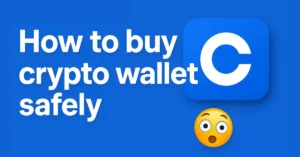Blockchain in finance and banking
Introduction
The finance and banking industry is undergoing a significant transformation, and one of the main technologies driving this change is blockchain. Originally developed as the foundation for cryptocurrencies like Bitcoin, blockchain has evolved into a powerful tool with the potential to reshape the way financial services operate.
In a world where speed, security, and transparency are becoming increasingly important, traditional financial systems often struggle with slow transactions, high fees, and complex verification processes. Blockchain offers solutions to these issues by enabling decentralized, tamper-proof, and real-time data sharing across multiple parties.
As banks and financial institutions search for innovative ways to improve operations, reduce costs, and enhance customer trust, blockchain is quickly becoming a key area of focus. This article explores how blockchain is being applied in finance and banking, its benefits, real-world use cases, and the challenges ahead.
How Blockchain Works
At its core, blockchain is a type of distributed ledger technology (DLT) that records transactions across a network of computers. Unlike traditional databases that are centralized and controlled by a single authority, blockchain operates in a decentralized manner. This means no single party has full control, and all participants in the network have access to the same version of the data.
Each transaction on a blockchain is recorded in a “block”. Once a block is filled with data, it is linked to the previous block, creating a chain of blocks, which is where the name “blockchain” comes from. These blocks are secured using cryptographic algorithms, making the data immutable. In other words, once information is recorded, it cannot be altered or deleted without the consensus of the entire network.
Here are the key features that make blockchain unique:
- Decentralization: Data is not stored in one place but shared across a network of nodes (computers), increasing reliability and trust.
- Transparency: Every participant can view the entire transaction history, which promotes accountability.
- Immutability: Transactions cannot be changed once they’re confirmed, reducing the risk of fraud or manipulation.
- Consensus Mechanisms: Transactions are validated through protocols like Proof of Work (PoW) or Proof of Stake (PoS), ensuring agreement across the network.
This structure makes blockchain highly secure, transparent, and resistant to tampering—qualities that are highly valuable in the world of finance and banking.
Applications of Blockchain in Finance and Banking
Blockchain technology is being applied in many areas of finance and banking, offering innovative solutions to long-standing challenges. Here are some of the key applications:
Cross-Border Payments
- Traditional international payments can take several days and involve multiple intermediaries, resulting in high fees and delays. Blockchain enables fast, direct, and low-cost cross-border transactions by eliminating the need for middlemen and using a single, secure ledger to process payments.
Smart Contracts
- Smart contracts are digital agreements written in code that automatically execute when predefined conditions are met. In finance, they can be used for automating loan approvals, insurance claims, and trade settlements, reducing manual processes and increasing efficiency.
KYC and Identity Verification
- Banks spend significant resources on Know Your Customer (KYC) and anti-money laundering (AML) procedures. Blockchain can streamline this by creating a shared digital identity that can be verified once and reused across multiple financial institutions, saving time and costs.
Trade Finance
- Trade finance often involves paperwork, delays, and a lack of transparency. Blockchain helps digitize and automate these processes, making supply chain transactions faster, more transparent, and less prone to fraud.
Clearing and Settlement
- The settlement of financial instruments like stocks and bonds can take days due to the involvement of multiple parties. Blockchain allows for real-time settlement, reducing risk and improving liquidity in the financial system.
Fraud Reduction and Auditability
- Since blockchain records are immutable and timestamped, they are ideal for detecting and preventing fraud. All actions are permanently recorded, making auditing easier and more accurate for financial institutions and regulators.
Blockchain is not just improving individual operations; it’s also creating a foundation for collaboration across financial networks, making the entire system more efficient and secure.
Benefits of Blockchain in Financial Systems
Blockchain offers several powerful benefits that are driving its adoption in the financial industry. By replacing outdated, manual, and centralized systems with decentralized, automated processes, blockchain is transforming how financial institutions operate. Below are the key advantages:
Faster Transactions
- Traditional banking systems often involve multiple intermediaries, causing delays, especially in cross-border transfers. With blockchain, transactions can be processed in near real-time, including outside of regular banking hours, which significantly speeds up operations.
Cost Efficiency
- By eliminating third-party intermediaries and reducing the need for manual verification, blockchain can lower operational and transaction costs. Banks can save billions annually on processes like clearing, settlement, and compliance.
Enhanced Security
- Blockchain uses advanced cryptographic techniques to secure data. Since each block is linked to the one before it and validated by the network, unauthorized changes are virtually impossible. This makes blockchain highly resistant to hacking and fraud.
Greater Transparency
- All participants in a blockchain network have access to a shared ledger. This ensures full visibility of transactions and builds trust among parties. It also simplifies auditing, as records are permanent and time-stamped.
Improved Compliance and Regulatory Reporting
- Blockchain’s detailed, immutable transaction logs can simplify reporting and compliance. Financial institutions can provide regulators with real-time access to necessary data, reducing the burden of audits and ensuring faster regulatory responses.
Better Risk Management
- Real-time data access and transparency help institutions monitor risk more effectively, manage liquidity, and react quickly to market changes, improving the overall stability of the financial system.
By offering a more secure, efficient, and transparent infrastructure, blockchain is laying the groundwork for a modernized global financial ecosystem.
Real-World Examples

Many leading financial institutions and fintech companies are actively exploring and implementing blockchain technology to improve their services. Here are some notable examples that show how blockchain is already being used in real-world financial systems:
JPMorgan Chase – JPM Coin and Onyx
- JPMorgan has developed JPM Coin, a digital token that allows institutional clients to make real-time payments. The bank also launched Onyx, a blockchain-based platform that handles billions of dollars in transactions daily. These innovations are helping JPMorgan streamline cross-border payments and improve settlement times.
Ripple – Cross-Border Payment Solutions
- Ripple, through its XRP-powered blockchain network, enables banks and payment providers to process global transactions instantly and at a lower cost. Institutions like Santander and Standard Chartered have used Ripple’s technology to enhance cross-border payment services.
HSBC – Trade Finance on Blockchain
- HSBC has conducted several successful pilots using blockchain for trade finance. One example is its use of the Contour platform, which enables faster processing of letters of credit, reducing the turnaround time from days to just hours.
Barclays – Smart Contract Testing
- Barclays has tested the use of smart contracts to automate derivatives trading and other complex financial agreements. By removing manual steps, smart contracts reduce the risk of errors and speed up execution.
The Central Bank of the Bahamas – Sand Dollar
- The Bahamas launched the Sand Dollar, one of the world’s first central bank digital currencies (CBDCs) based on blockchain. This initiative aims to improve financial inclusion and make banking services more accessible to remote areas.
The Australian Securities Exchange (ASX)
- ASX is replacing its legacy clearing and settlement system with a blockchain-based platform, making it one of the first major stock exchanges to adopt blockchain for core operations. This change will enhance transparency and reduce costs for market participants.
These examples show that blockchain is no longer just an emerging trend—it is being actively tested, adopted, and scaled by major players in the financial industry.
Challenges and Limitations
While blockchain offers many advantages, its adoption in finance and banking is not without obstacles. Institutions must address several technical, regulatory, and operational challenges before the technology can be widely implemented. Below are the main limitations:
Regulatory Uncertainty
- One of the biggest hurdles is the lack of clear regulations around blockchain use. Different countries have varying laws regarding digital assets, smart contracts, and data privacy. This regulatory uncertainty makes it difficult for banks to adopt blockchain solutions on a large scale without risking non-compliance.
Integration with Legacy Systems
- Most financial institutions operate on outdated, complex IT systems that are not compatible with modern blockchain platforms. Replacing or integrating these legacy systems requires significant investment, technical upgrades, and time, making the transition difficult and costly.
Scalability Issues
- Public blockchains like Bitcoin and Ethereum face scalability limitations, meaning they can only process a limited number of transactions per second. For large-scale financial applications, blockchain must evolve to handle high volumes of data and users efficiently.
Energy Consumption
- Some blockchain networks, especially those using Proof of Work (PoW) mechanisms, consume large amounts of electricity. This raises concerns about environmental sustainability, especially as financial institutions aim to reduce their carbon footprint.
Data Privacy Concerns
- While transparency is a benefit, it can also become a privacy concern in financial services. Public blockchain networks make transaction data visible to all participants, which may conflict with confidentiality requirements in banking.
Lack of Standardization
- There is currently no universal standard for how blockchain should be used in finance. Different platforms and protocols make it difficult for systems to communicate with each other, limiting interoperability between institutions and markets.
Despite these challenges, many of them are being actively addressed through innovation, pilot programs, and evolving regulations. As the technology matures, its limitations are expected to decrease, paving the way for broader adoption.
Future of Blockchain in Finance

The future of blockchain in the financial sector looks promising. As the technology continues to evolve and gain wider acceptance, its role in reshaping the global financial landscape is expected to grow significantly. Here are some key trends and developments that indicate where blockchain is headed:
Rise of Central Bank Digital Currencies (CBDCs)
- Many central banks around the world are exploring or developing blockchain-based digital currencies, known as CBDCs. These government-backed digital currencies could offer the benefits of blockchain—such as faster payments and improved transparency—while maintaining regulatory oversight. Countries like China, Sweden, and the Bahamas are already testing or launching CBDCs.
Greater Institutional Adoption
- Major financial institutions are moving from pilot projects to full-scale blockchain deployments. As technology matures and becomes more user-friendly, more banks, insurance companies, and investment firms will integrate blockchain into their core operations for payments, asset management, and compliance.
Interoperability Improvements
- One current limitation is the lack of standardization across blockchain platforms. In the future, we can expect the development of interoperable solutions, enabling different blockchains to communicate and share data seamlessly. This will increase efficiency and collaboration across the financial ecosystem.
Growth of Decentralized Finance (DeFi)
- DeFi is an emerging sector that offers financial services like lending, borrowing, and trading directly through blockchain protocols, s—without intermediaries. While still developing, DeFi has the potential to transform traditional banking models and create more open, accessible financial systems.
Enhanced Regulatory Frameworks
- Governments and international regulatory bodies are actively working on clearer guidelines and policies for blockchain use in finance. These frameworks will give institutions more confidence to invest in and scale their blockchain initiatives while ensuring compliance and consumer protection.
Advanced Use of Smart Contracts and Tokenization
- The future will likely see broader use of smart contracts for automating complex financial agreements and tokenization of real-world assets like real estate, bonds, or commodities. These innovations could increase liquidity, transparency, and accessibility in financial markets.
In the coming years, blockchain is expected to move from a disruptive technology to a foundational component of financial infrastructure, transforming how money moves, contracts are executed, and trust is established in global finance.
Advantages and Disadvantages of Blockchain in Finance and Banking
Advantages
| Increased Transparency All transactions are recorded on a shared ledger that is visible to authorized participants, promoting trust and reducing the chances of manipulation or fraud. |
| Enhanced Security Blockchain uses cryptographic techniques to secure data. Once information is recorded, it cannot be altered without consensus, making the system highly resistant to cyberattacks and data breaches. |
| Faster Transactions Unlike traditional systems that rely on third-party verification and clearinghouses, blockchain enables real-time or near-instant settlement, especially for cross-border transactions. |
| Cost Reduction By eliminating intermediaries and automating processes (such as through smart contracts), blockchain can significantly reduce transaction and operational costs for banks and financial institutions. |
| Improved Traceability and Auditability Every transaction on a blockchain is timestamped and permanently recorded, which makes auditing easier and more accurate, improving compliance with regulations. |
| Decentralization Blockchain eliminates the need for a central authority, allowing peer-to-peer transactions and reducing single points of failure. |
Disadvantages
| Regulatory Uncertainty Many countries still lack clear legal frameworks for blockchain and digital assets, creating risks for institutions that want to adopt the technology. |
| Scalability Limitations Most public blockchains can only handle a limited number of transactions per second, which may not meet the demands of large financial institutions without further innovation. |
| Integration Challenges Adapting blockchain to work with existing legacy systems can be complex, time-consuming, and expensive, especially for large banks with outdated infrastructure. |
| Energy Consumption Certain blockchain networks (like those using Proof of Work) consume a large amount of electricity, raising environmental concerns and increasing operational costs. |
| Data Privacy Issues While transparency is beneficial, it can conflict with banking privacy laws and confidentiality requirements, especially when using public blockchains. |
| Lack of Standardization The absence of universal standards across blockchain platforms limits interoperability and slows down adoption on a wider scale. |
This balanced overview helps readers understand not only the strengths of blockchain in finance but also the real-world limitations that need to be addressed for full-scale adoption.
FAQs: Blockchain in Finance and Banking
What is blockchain in simple words?
Blockchain is a type of digital ledger that records transactions in a secure and transparent way. Instead of one central authority keeping records, the data is shared across many computers, making it hard to change or hack.
How is blockchain used in banking?
Banks use blockchain to speed up payments, reduce fraud, automate processes with smart contracts, and improve security and transparency. It helps make financial services faster, safer, and cheaper.
Can blockchain replace traditional banks?
Not entirely. Blockchain can improve how banks work, but it’s not likely to replace them completely. Instead, banks are starting to use blockchain to make their services better and more efficient.
Is blockchain safe for financial transactions?
Yes, blockchain is considered very secure. It uses strong encryption and a system where all participants must agree on transactions, making it difficult for hackers to alter data.
What are the biggest benefits of using blockchain in finance?
Some major benefits include:
- Faster transactions
- Lower fees
- More transparency
- Better security
- Easier compliance and auditing
What are the main problems with blockchain in banking?
Some challenges include:
- Unclear government rules
- High energy use (in some systems)
- Difficulty working with older banking systems
- Concerns about privacy and scalability
Are cryptocurrencies and blockchain the same thing?
No. Cryptocurrencies like Bitcoin use blockchain, but blockchain is the underlying technology that can be used for many other things—not just digital money.
Will all banks use blockchain in the future?
Many banks are testing or already using blockchain for certain services. While not all banks will use it right away, its adoption is likely to grow in the coming years.
Conclusion
Blockchain is changing the way finance and banking work by making transactions faster, safer, and more transparent. While there are still some challenges to overcome, the benefits are too big to ignore. As the technology grows and becomes more widely accepted, blockchain will likely become a key part of the future of banking.
Bonus Points
- Blockchain is not just for banks – It’s also being used in healthcare, real estate, voting systems, and supply chain management.
- Private vs. Public Blockchains – Banks often use private blockchains, which are permissioned and more controlled, unlike public ones like Bitcoin.
- Blockchain can reduce human error – Since many processes are automated through smart contracts, there’s less chance of mistakes.
- More job opportunities – As blockchain adoption grows, so does the demand for blockchain developers, analysts, and legal finance experts.
- Improved financial inclusion – Blockchain can help people in remote or underserved areas access secure and affordable financial services.
- Real-time auditing – Financial records on blockchain can be audited instantly, reducing time and cost for institutions.
Also read
- What is a Crypto Wallet and How Does It Work? – Coinsify
- 10 Crypto Terms Every Beginner Must Know – Coinsify
- What is Blockchain Technology – Complete Guide – Coinsify
- How to Buy Crypto Safely in 2025 – Complete Guide – Coinsify
- Bitcoin vs Ethereum: Key Differences Explained – Complete Guide
- Ultimate Blockchain Glossary: Learn Blockchain Terms Easily
- How to Buy Bitcoin Safely (Complete Beginner’s Guide)
- Top 10 Crypto Wallets for Beginners (2025 Edition)
- What is Cryptocurrency? A Beginner-Friendly Guide (2025)






